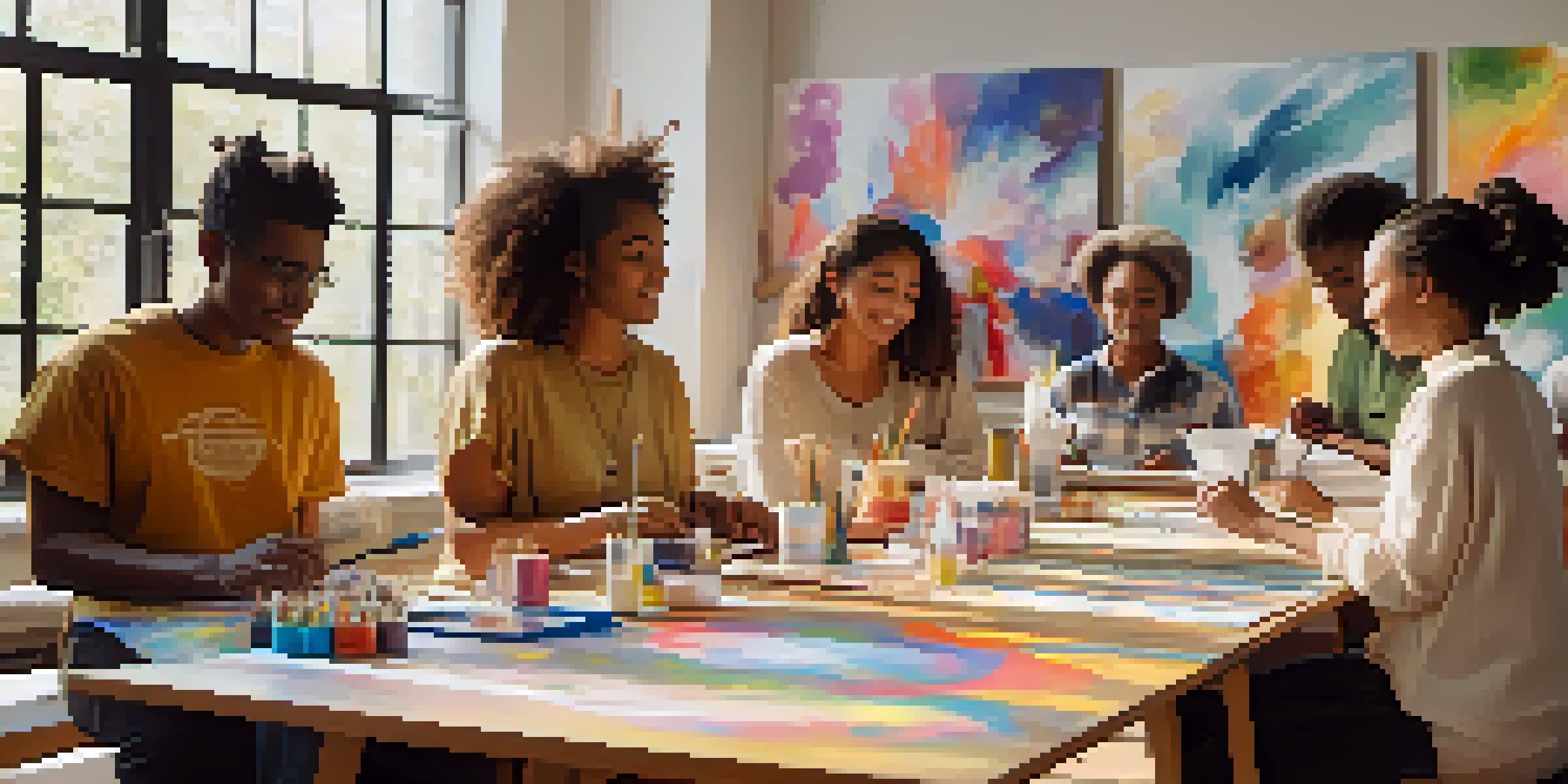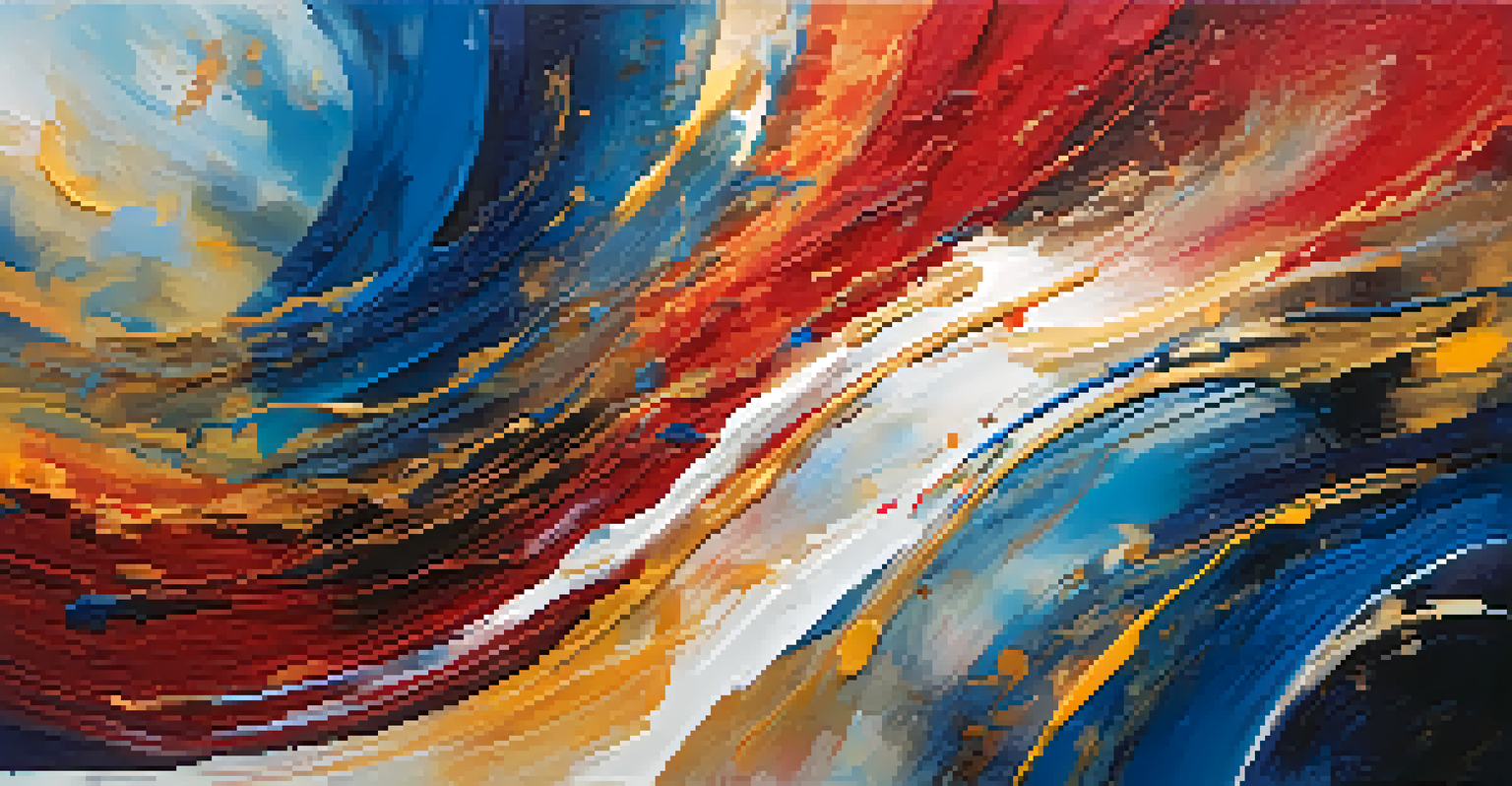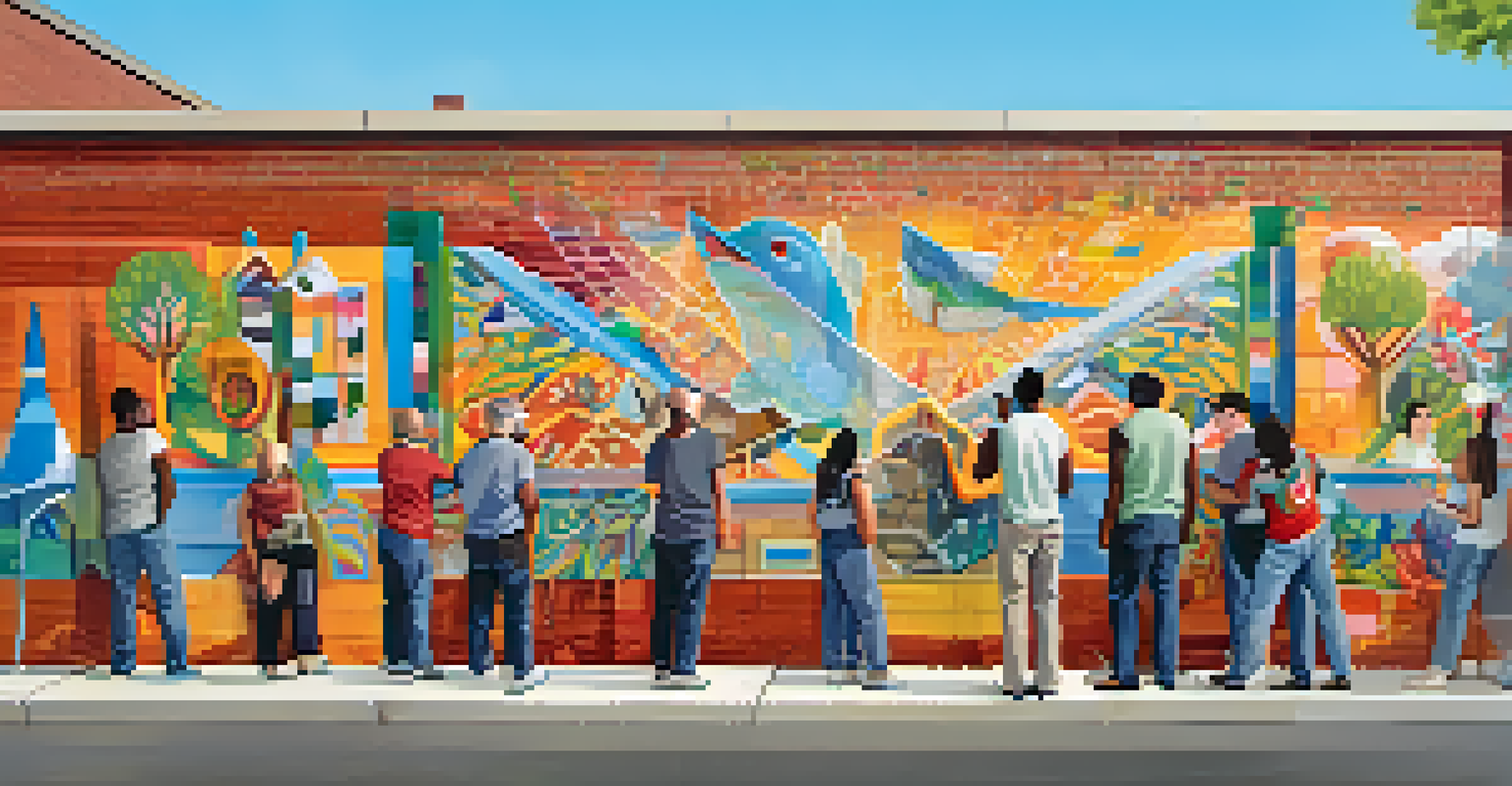Artistic Expression: A Pathway to Understanding Trauma

The Interconnection of Art and Trauma Understanding
Art has long been a medium through which individuals can express their deepest emotions. When it comes to trauma, artistic expression allows people to articulate feelings that may be too complex or painful to convey with words. A simple painting or a moving piece of music can encapsulate experiences and emotions that often remain hidden in the shadows of the mind.
Art is the most beautiful of all lies.
Consider a child who experiences trauma; they might not have the vocabulary to describe their feelings. However, through drawing or creating, they can depict their inner turmoil in a way that resonates with others. This creative outlet not only provides a voice but also opens pathways for understanding the nuances of their experience.
Ultimately, engaging in artistic expression can help individuals process their trauma by transforming pain into something tangible and relatable. It fosters a connection between the artist and the audience, creating a shared understanding that can be both healing and enlightening.
Art Therapy: A Structured Approach to Healing
Art therapy is a clinical practice that combines the principles of psychology with creative expression. Licensed therapists guide patients in using various art forms—such as painting, sculpture, or music—to explore and communicate their feelings about trauma. This structured approach not only helps individuals process their experiences but also aids in building coping strategies.

For instance, a veteran struggling with PTSD might use art therapy to recreate a scene from their past. This act can facilitate discussion about their feelings and thoughts related to the trauma, providing a safe space for exploration. Through this guided process, they can begin to understand and confront feelings that may have been buried for years.
Art Transforms Trauma into Expression
Artistic expression allows individuals to convey complex emotions related to trauma in a tangible way.
Art therapy is particularly effective because it transcends verbal communication, allowing individuals to express themselves in a more profound way. It also empowers them to take control of their healing journey, making it an invaluable tool in trauma recovery.
Creative Outlets: More Than Just Art Therapy
While art therapy provides a structured approach, creative outlets extend beyond therapy sessions, offering continuous support in the healing process. Engaging in activities such as writing, dancing, or crafting allows individuals to explore their emotions freely and at their own pace. These creative pursuits become a safe haven where they can express their feelings without judgment.
The sole purpose of human existence is to kindle a light in the darkness of mere being.
For example, a person might find solace in journaling, using words to narrate their journey through trauma. This private act of writing can serve as a powerful release, allowing them to confront their feelings and reflect on their experiences. Similarly, dancing can embody emotions that words fail to capture, making it a liberating form of expression.
Ultimately, these creative outlets not only aid in the healing process but also foster a sense of self-discovery and empowerment. They remind individuals that their stories matter and that there is beauty even in the depths of pain.
The Role of Community in Artistic Expression
Artistic expression can also thrive in community settings, where individuals come together to share their stories and experiences. Community art projects, workshops, and group therapy sessions create a supportive environment that encourages collaboration and mutual understanding. Through these shared experiences, participants can find comfort in knowing they are not alone in their struggles.
Imagine a local mural project where survivors of trauma contribute their artistic talents to create a communal piece. Each brushstroke tells a story, and the finished work becomes a symbol of healing and resilience. This collective effort fosters a sense of belonging and connection, reinforcing the idea that art can be a powerful catalyst for communal healing.
Art Therapy Enhances Healing Journeys
Structured art therapy helps individuals process trauma and develop coping strategies through creative outlets.
Community involvement not only enhances the impact of artistic expression but also cultivates empathy and understanding among individuals. It demonstrates the power of shared experiences and the importance of supporting one another on the journey to healing.
Finding Your Artistic Voice: Overcoming Barriers
Many individuals may hesitate to engage in artistic expression due to self-doubt or fear of judgment. It's essential to recognize that the purpose of art is not to be perfect but to convey emotion and experience. By reframing the narrative around artistic expression, individuals can overcome these barriers and embrace their unique voices.
For instance, a person who feels they can't draw might find joy in creating abstract art, where the focus is on emotion rather than technique. This shift in perspective allows them to explore their creativity freely, fostering a sense of liberation. Remember, the beauty of artistic expression lies in its diversity; there are no right or wrong ways to create.
Encouraging oneself to experiment and explore different forms of art can lead to unexpected discoveries. By letting go of perfectionism, individuals can tap into their authentic selves, ultimately finding healing through their unique artistic journey.
Art as a Reflection of Healing Progress
As individuals journey through their healing process, their art often reflects their progress and transformation. Over time, the themes and emotions expressed in their work can shift, showcasing their growth and resilience. This evolving artistic expression serves as a powerful reminder of their journey and the healing they have experienced.
For example, a series of paintings created during different stages of healing can visually narrate the story of recovery. The initial pieces may be dark and chaotic, but as the healing progresses, the colors and forms may become brighter and more harmonious. This visual representation allows both the artist and the audience to witness the evolution of the healing journey.
Community Fosters Collective Healing
Engaging in community art projects promotes shared experiences and creates a supportive environment for healing.
Recognizing this progression not only instills a sense of accomplishment but also reinforces the belief that healing is possible. Art becomes a testament to resilience, reminding individuals that they have the power to overcome their trauma and emerge stronger.
The Future of Artistic Expression in Trauma Recovery
As we continue to recognize the profound impact of artistic expression on trauma recovery, the future looks bright for integrating creativity into healing practices. Increased awareness of mental health issues has prompted more organizations to incorporate art into therapeutic settings. This shift is vital in creating holistic approaches to healing that address both the mind and the spirit.
Moreover, advancements in technology have expanded access to artistic expression through online platforms and virtual workshops. Individuals who may not have had access to traditional art therapy can now engage in creative activities from the comfort of their homes. This accessibility empowers more people to explore their emotions and find healing through art.

In conclusion, the future of artistic expression in trauma recovery is promising. As society continues to embrace the power of creativity, we can foster environments where individuals feel empowered to express themselves and heal, one brushstroke or note at a time.